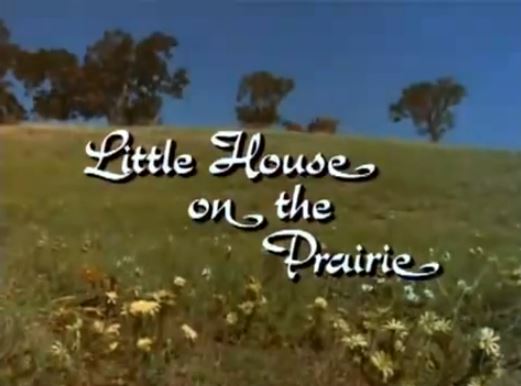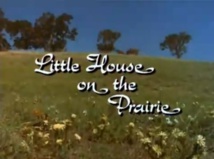The book "is Laura Ingalls' very first draft before it was edited and romanticized," the press's director Nancy Tystad Koupal told AFP.
"We decided to keep this version, because it was as close to the original story of the 19th century pioneers. We wanted to show, in a sense, a behind the scenes of 'The Little House.'"
Wilder first wrote the book in 1930 and it has been annotated by Pamela Hill Smith, who researched all the places and dates Wilder mentioned.
In "Pioneer Life," Wilder details 16 years of travels by her family through an array of Midwestern states including Kansas, Missouri, Wisconsin, Minnesota and Iowa.
Wilder's recollections formed the basis of the "Little House" books that were published between 1932 and 1943.
Whereas the series of 11 volumes paints a fairly innocent picture of pioneer times, Wilder's autobiography bears witness to a less glossy reality.
"At the time, life was hard. Violence was typical. It was part of the pioneers' life," Koupal said.
Koupal says the Ingalls family was in poor financial shape, with little cash and they didn't own a home. Instead, they lived in apartments that Laura's father couldn't always pay for.
"They had to flee in the middle of the night to avoid paying rent," Koupal said.
- Love for 'Little House' -
The autobiography also describes a man who, after drinking a considerable amount of whisky, managed to burn his lungs while lighting a cigar.
Many elements in "Pioneer Girl" were edited out of adaptations because they were considered too violent. In real life, Laura Ingalls took care of a sick woman whose drunk husband tried to rape her. The author only escaped by fighting back.
Wilder's books were adapted for television in 1974 by Michael Landon -- who also starred on the show. It ran for nine seasons, comprising more than 200 episodes.
The "Little House" books and television series were enjoyed by successive generations, which goes some way to explaining the enormous demand for the new book.
"For a lot of people, Laura Ingalls was a big part of their childhood," Koupal said.
Sales really took off after national radio broadcaster NPR and other US media outlets drew attention to it.
The book has soared up the Amazon bestseller list, and for a short while last week eclipsed even "American Sniper" for the top spot.
The decision to make an annotated version was taken after considerable research into the events depicted in the book.
"We had to check if her memory was correct," Koupal said.
"It is her autobiography, but she wrote it when she was 60, and sometimes, memory fails."
Wilder first wrote her autobiography at the request of her daughter Rose, who herself became a noted writer.
"We also wanted to explore her relationship with her daughter Rose, who was her editor and the one who convinced her to write her memoirs. Then, we wanted to show the difference between fiction and reality."
The historical society wanted to distance itself from the television series, which was the most romanticized of all the adaptations.
Since its publication, orders for the autobiography have exploded.
An initial print-run of 15,000 was sold out within a few weeks. The historical society then placed orders for another 15,000 followed by another 45,000 books.
"We couldn't ask for more," Koupal said. "We may not have seen the last of it."
----------------------------------------------------------------------------------------------------------
"We decided to keep this version, because it was as close to the original story of the 19th century pioneers. We wanted to show, in a sense, a behind the scenes of 'The Little House.'"
Wilder first wrote the book in 1930 and it has been annotated by Pamela Hill Smith, who researched all the places and dates Wilder mentioned.
In "Pioneer Life," Wilder details 16 years of travels by her family through an array of Midwestern states including Kansas, Missouri, Wisconsin, Minnesota and Iowa.
Wilder's recollections formed the basis of the "Little House" books that were published between 1932 and 1943.
Whereas the series of 11 volumes paints a fairly innocent picture of pioneer times, Wilder's autobiography bears witness to a less glossy reality.
"At the time, life was hard. Violence was typical. It was part of the pioneers' life," Koupal said.
Koupal says the Ingalls family was in poor financial shape, with little cash and they didn't own a home. Instead, they lived in apartments that Laura's father couldn't always pay for.
"They had to flee in the middle of the night to avoid paying rent," Koupal said.
- Love for 'Little House' -
The autobiography also describes a man who, after drinking a considerable amount of whisky, managed to burn his lungs while lighting a cigar.
Many elements in "Pioneer Girl" were edited out of adaptations because they were considered too violent. In real life, Laura Ingalls took care of a sick woman whose drunk husband tried to rape her. The author only escaped by fighting back.
Wilder's books were adapted for television in 1974 by Michael Landon -- who also starred on the show. It ran for nine seasons, comprising more than 200 episodes.
The "Little House" books and television series were enjoyed by successive generations, which goes some way to explaining the enormous demand for the new book.
"For a lot of people, Laura Ingalls was a big part of their childhood," Koupal said.
Sales really took off after national radio broadcaster NPR and other US media outlets drew attention to it.
The book has soared up the Amazon bestseller list, and for a short while last week eclipsed even "American Sniper" for the top spot.
The decision to make an annotated version was taken after considerable research into the events depicted in the book.
"We had to check if her memory was correct," Koupal said.
"It is her autobiography, but she wrote it when she was 60, and sometimes, memory fails."
Wilder first wrote her autobiography at the request of her daughter Rose, who herself became a noted writer.
"We also wanted to explore her relationship with her daughter Rose, who was her editor and the one who convinced her to write her memoirs. Then, we wanted to show the difference between fiction and reality."
The historical society wanted to distance itself from the television series, which was the most romanticized of all the adaptations.
Since its publication, orders for the autobiography have exploded.
An initial print-run of 15,000 was sold out within a few weeks. The historical society then placed orders for another 15,000 followed by another 45,000 books.
"We couldn't ask for more," Koupal said. "We may not have seen the last of it."
----------------------------------------------------------------------------------------------------------









 Home
Home Politics
Politics











